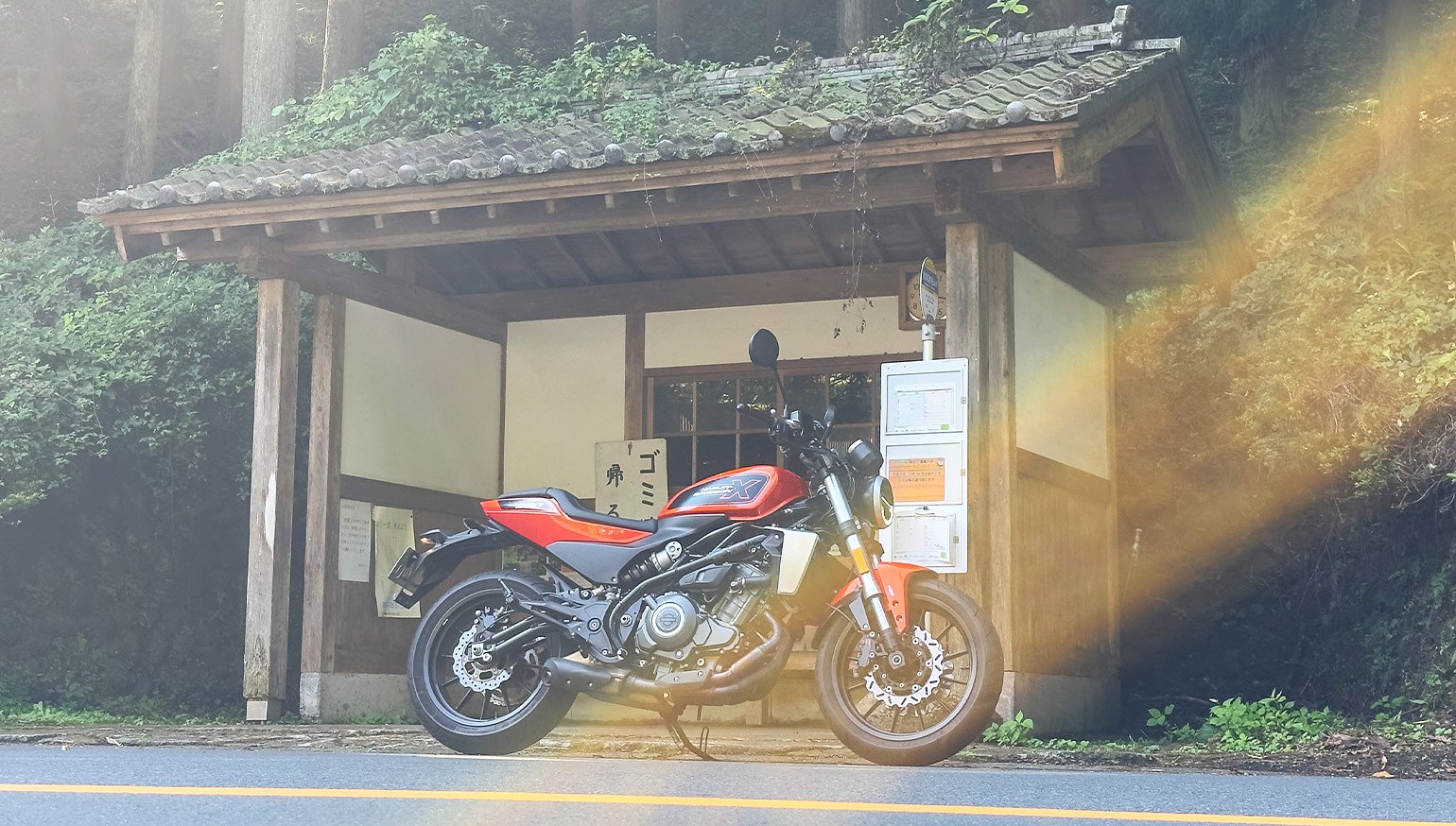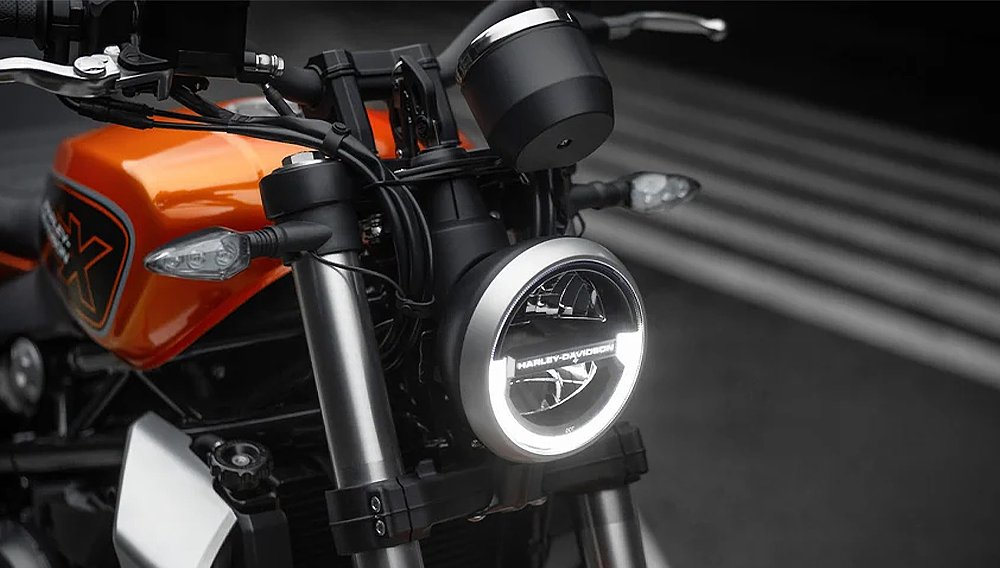“That ain’t a real Harley.”
It’s a derogatory statement in cruiser circles. An insult reserved for the Sportsters and Street 750s in the Hog household. No wonder the expression came to mind when I first fired up the X350.
Absent was the lumpy “potato-potato-potato” of a 45-degree V-twin, replaced instead by the muted pitter-patter of a puny parallel twin. Its trip meter counted kilometers, not miles. Its speedometer reported km/h, not mph. Its fuel tank, measured in liters, not gallons. If any Harley isn’t a “real” Harley, it’s the X350.
While an arbitrary label of authenticity matters most to Harlistas, it doesn’t matter to most outsiders. That’s because a bike doesn’t have to be a “real” Harley to be a good motorcycle. When the chips are down, that’s the only thing that matters at all. Before evaluating the actual merits of the Motor Company’s smallest offering — and not its presumed “realness” — we first need to agree on what lies beneath the brand’s badge.
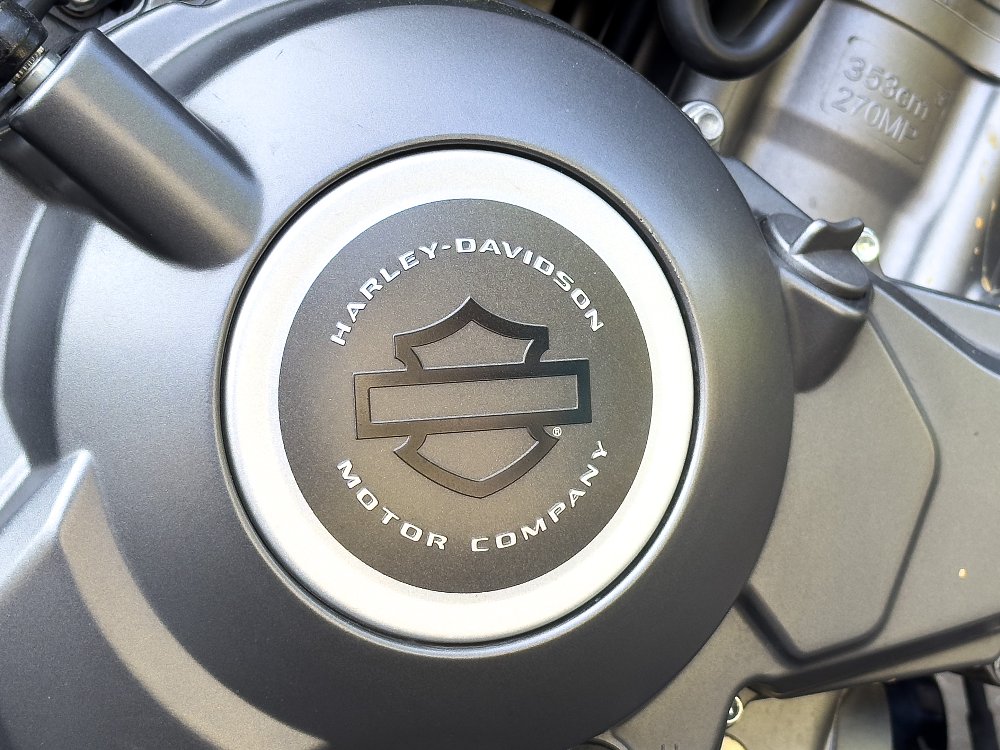
Double agent
Harley introduced the X350 in 2023, but the only way to ride the model in the States is to attend one of the Harley-Davidson Riding Academy courses, where the X350RA functions as a training tool. The road-legal variant, however, remains restricted to select markets in Asia and Oceania. One of which is Japan. During an extended stay in the Land of the Rising Sun, I took the opportunity to test one of the only Harley-Davidsons we don’t get back home.
The X350 may bear the bar and shield, but it’s a product of Chinese manufacturer Qianjiang Motorcycle Company Limited (QJMOTOR). (Is there anything less Harley than that?) The small-bore naked bike isn’t the lovechild of H-D and QJ’s partnership, either. Instead, it’s a retooled and reskinned version of the 302S, a model produced for legacy Italian OEM and current Qianjiang subsidiary Benelli. Sprinkle a pinch of Harley’s magic fairy dust on the 302S, and what you have is the X350.
Its engine is but one example. QJ equips Benelli’s roadster with a liquid-cooled, eight-valve parallel twin. It does the same with the X350. However, key tweaks make all the difference here. For instance, the 302S’s 300 cc displacement is achieved with a bore of 65 mm and a stroke of 45.2 mm. Harley maintains the latter but broadens the former to 70.5 mm, resulting in a 53 cc advantage. That doesn’t mean it enjoys a power advantage, though.
Whereas the 302S pumps out a claimed 37.5 horsepower (at 11,000 rpm), the X350 is listed at 36 horsepower (at 8,500 rpm). The difference in output is negligible. It’s where each model peaks that’s significant. The same principle applies to maximum torque. The Benelli generates 18.9 foot-pounds at 9,750 rpm, while the X350 lays down 22.9 foot-pounds at 7,000 rpm. It’s clear where the Hog’s priorities lie: accessible power and torque. If that doesn’t smack of Harley, I don’t know what does.
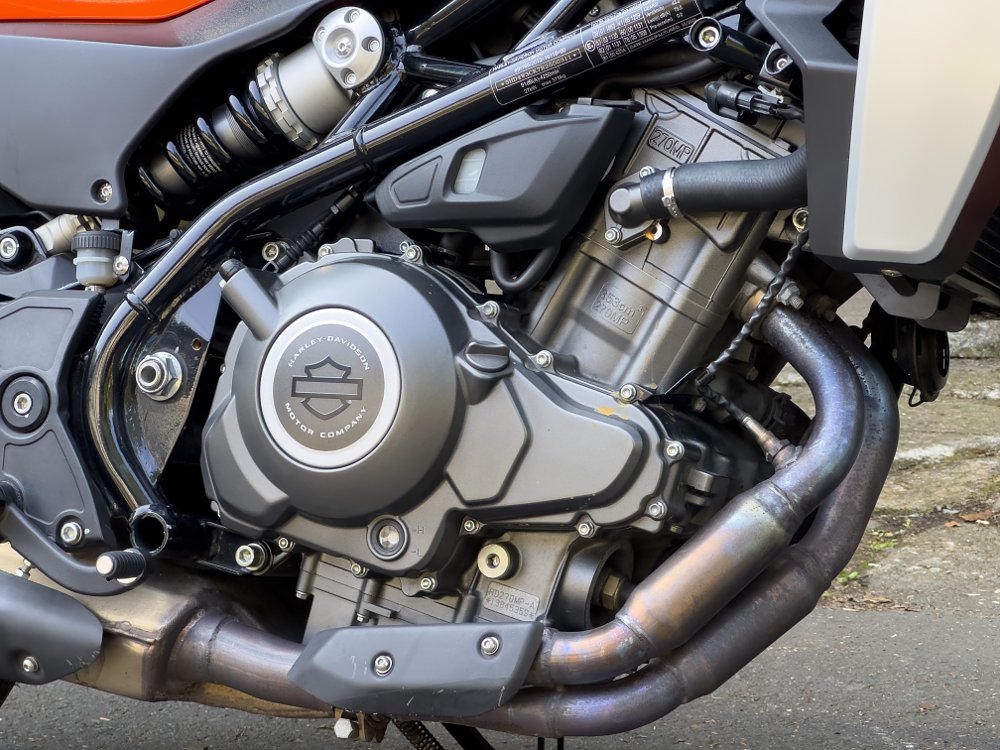
The package surrounding the X350’s parallel twin follows in the same vein. Take one look at the model’s spec sheet and you’ll notice how much it borrows from the 302S. Both bikes share the same 1,410 mm (55.5-inch) wheelbase and 195 kilogram (430-pound) curb weight. The 41 mm inverted fork and rear monoshock suspension carry over, as do the dual petal-style brake discs and four-piston calipers up front. Those similarities end when it comes to the X350’s seat.
Harley-Davidson is highly conscious of its motorbikes' seat heights. If its low-slung cruisers aren’t enough evidence, see the Pan America’s Adaptive Ride Height feature for undeniable proof. It’s no different here. Though the 302S’s saddle measures just 795 mm (31.3 inches) from the ground, that figure is too high in Harley’s book. That’s why the X350’s perch rests at 777 mm (30.6 inches).
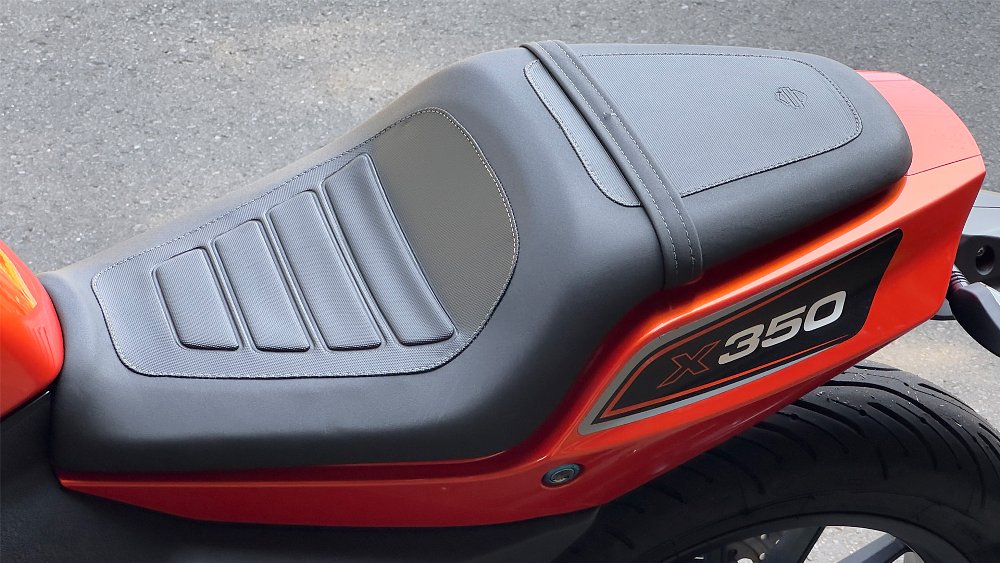
The lower height may ensure sure-footed stops, but it promotes neither long-term nor short-term comfort. That much was apparent after taking the X350 under my charge for 24 hours.
Back in the saddle
The dark pinks and purples of twilight color the sky, providing a dusty backdrop for the twinkling skyline of Tokyo. The X350 thrums underneath me. Its tires glide over the faultless asphalt of Tokyo’s Rainbow Bridge. With the Tokyo Tower in my peripheral, the Tokyo Skytree in the distance, and the Tokyo Bay beneath me, I tell myself, “there’s nothing like riding a bike.”
Forgive my poetic waxing. By now, I’ve been in Japan for 25 days. This is the first time I’ve ridden a motorcycle in as many days. Whether it’s a Harley or not is irrelevant. I’m on two wheels and I’m rolling into the biggest city in the world. It all feels like a cutscene from the anime classic "Akira." That is, until I encounter the rush-hour traffic of Roppongi Hills.
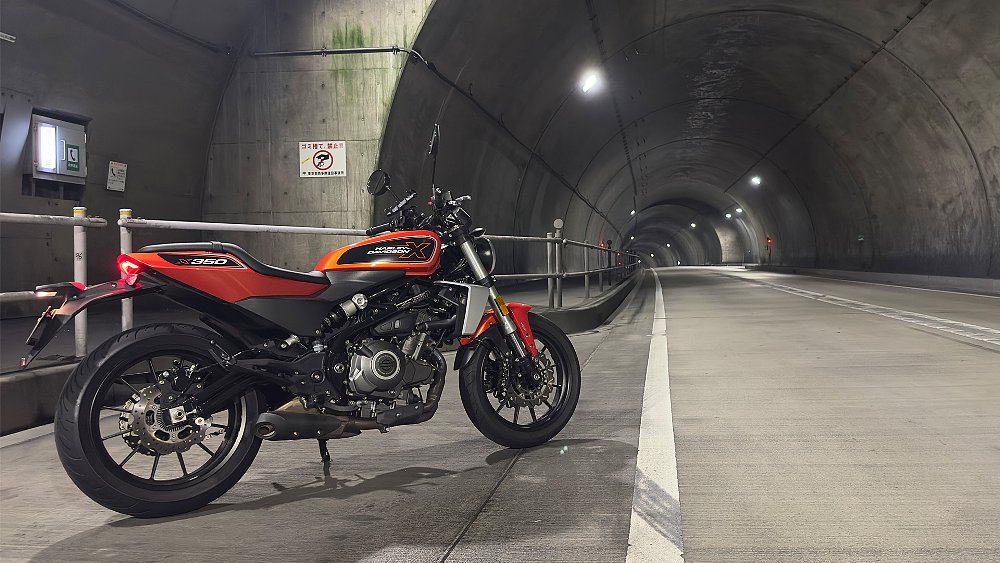
Big-Twin Hogs are known for their heavy curb weights. One can’t attribute that same quality to the X350. The entry-level naked isn’t just light off the kickstand, it’s also light on its feet. Whip the bike into this gap, toss it into that corner, and it completes each maneuver with nary a protest. In crowded confines, it's both direct and swift, both balanced and lithe. The model owes much of that to its chassis, but the responsive throttle is just as much of an asset.
Japan is a land of rules — both spoken and unspoken. Lane-sharing, for one, isn’t explicitly outlawed, but it’s frowned upon. In other words, if the keisatsu catch you cutting to the front of the line, they’re liable to throw the book at you. Lane-splitting wouldn’t be so tantalizing had the daytime highs not been 97 degrees (F), with overnight lows of 82 degrees (F). Slaloming through the herd of taxis and box trucks wasn’t just the best way to make progress, it was the only way to get some relief from the heat and. That’s where the X350’s available torque and crisp throttle response paid off most.
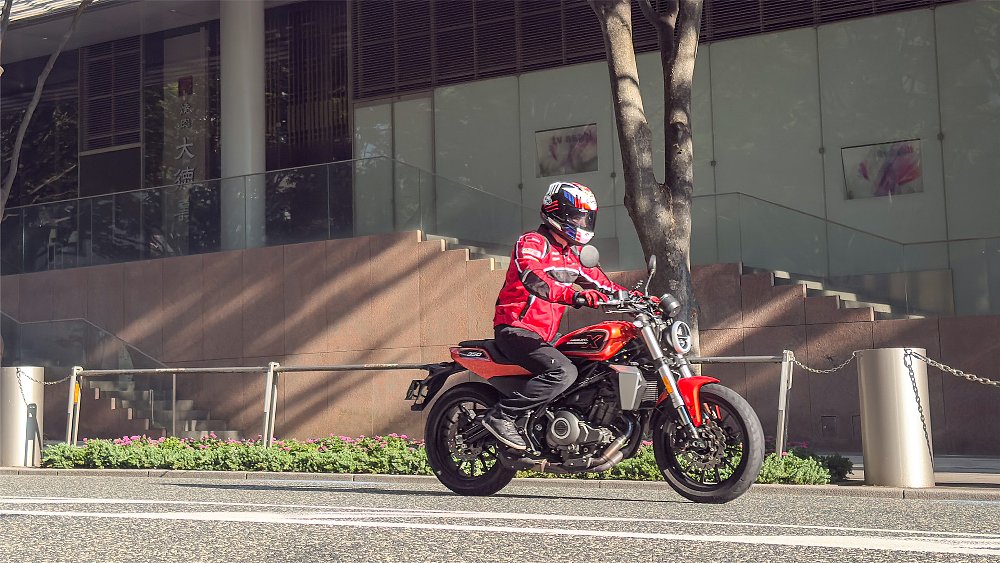
Ride-by-wire throttles are all the rage with manufacturers these days. It’s easy to see why, with tightening emissions and tech upgrades driving those efforts. The X350 flies in the face of that trend, keeping it old school with a cable throttle. No, it doesn’t tout ride modes, cruise control, or a quickshifter, but it’s ready to unleash all 36 of its ponies on your command. Crack the throttle and the X350 springs forward, eager to wedge between the slightest opening in traffic. It’s as immediate as it is accurate, as gratifying as it is amusing. Unfortunately, that responsiveness doesn’t come without its costs.
If you’re looking for an active ride experience, H-D’s little roadster has you covered. That’s because the X350 gives your clutch hand and shifter foot more busy work than an unpaid intern. The short gearing may benefit low-end drive, but it also calls for shifting to second around 20 kph (12 mph), third by 40 kph (25 mph), and fourth by 60 kph (37 mph). So on and so forth. That didn’t pose a massive deterrent during my evening joyride. The opposite was true when I got the X350 on the open road the next morning.
Slow and steady
Unless marked otherwise, Japanese expressways tend to uphold a 100 kph (62 mph) speed limit. That’s not that different from the 65 mph or 70 mph pace permitted on many U.S. interstates. The main difference is, the vast majority of Japanese drivers (or at least the ones leaving Tokyo for the suburbs and the countryside) drive under those posted limits. It’s a driving habit I fully appreciated, especially while straddling my 36-horsepower steed. In those environs, the X350 held its own. Maintaining 100 kph may not be the bike’s strong suit, but it doesn’t shrink under such circumstances, either. That only occurs when turning up the wick.
Engine vibrations are a quintessential Harley quality. I’m afraid the X350’s engine vibes wouldn’t qualify. Most Hogs sustain a loping rumble, like a coin-op massage chair. By contrast, the high-revving p-twin tremors like a sonic toothbrush. Vibrations ripple through the grips and pegs as low as 5,500 rpm. At that point, they’re tangible but tolerable. Push the speedo beyond 120 kph and the rev counter beyond 7,500 rpm, and X350 shakes into hand- and foot-numbing territory. Of course, much of that issue calls back to the model’s short gearing.
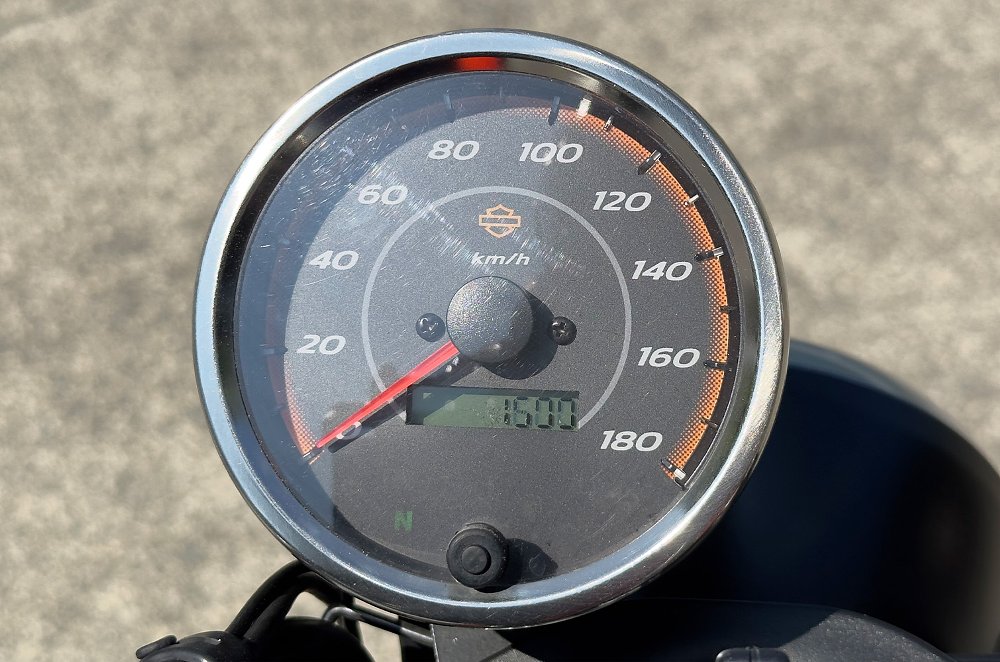
On surface roads, I often shifted directly from neutral to second gear when pulling away from intersections, skipping first gear altogether. It saved me one extra shift when clicking through the transmission, all without sacrificing acceleration off the line. If only I could replace that expendable gear down low with another one up top.
I couldn’t count the number of times my foot reached for an extra gear out on the highway. No matter how many times I tried, it still wasn’t there. I wasn’t just stretching the X350’s legs, I was stretching its limits. So, I tucked into the slow lane with the obāchans and ojīchans and let the X350 hum along. That doesn’t mean it was smooth sailing, though.
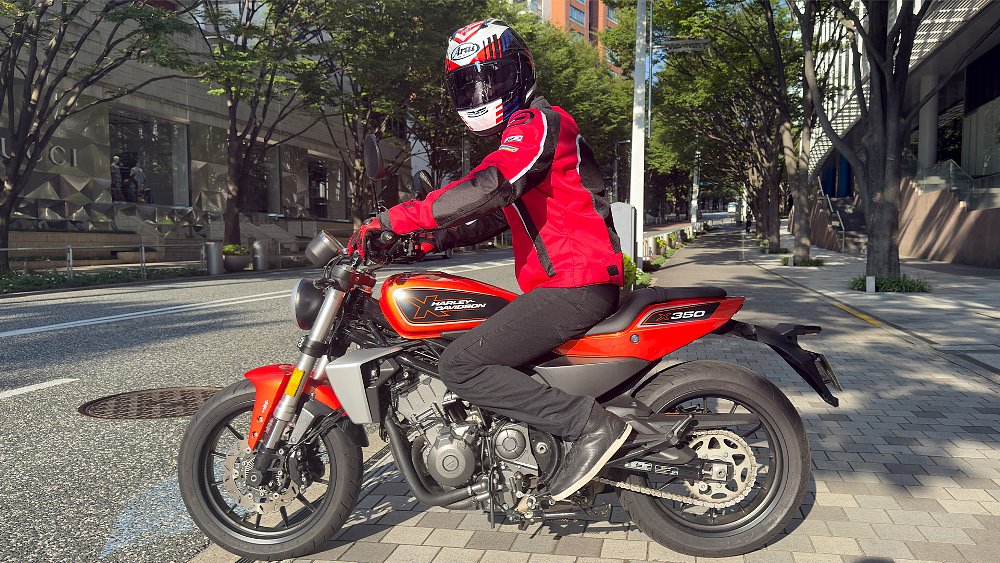
Just 30 minutes into the ride, and my backside was barking. The X350’s tracker-style seat was the lone suspect. Not only was its padding too thin for comfort, but its low height compressed the distance to the footpegs, sacrificing legroom in the process. Relief was hard to come by. If I wasn’t shifting my caboose to one side of the seat, I was stretching my legs into the oncoming wind. Needless to say, I breathed a sigh of relief when my exit finally arrived.
Hogging the road
Anyone preaching the gospel of the “real” Harley conveniently forgets to mention the Achilles heel of big, heavy cruisers: the twisties. If a tepid pace and lean angles in the 20s are your thing, most Hogs will oblige. The X350 isn’t one of them.
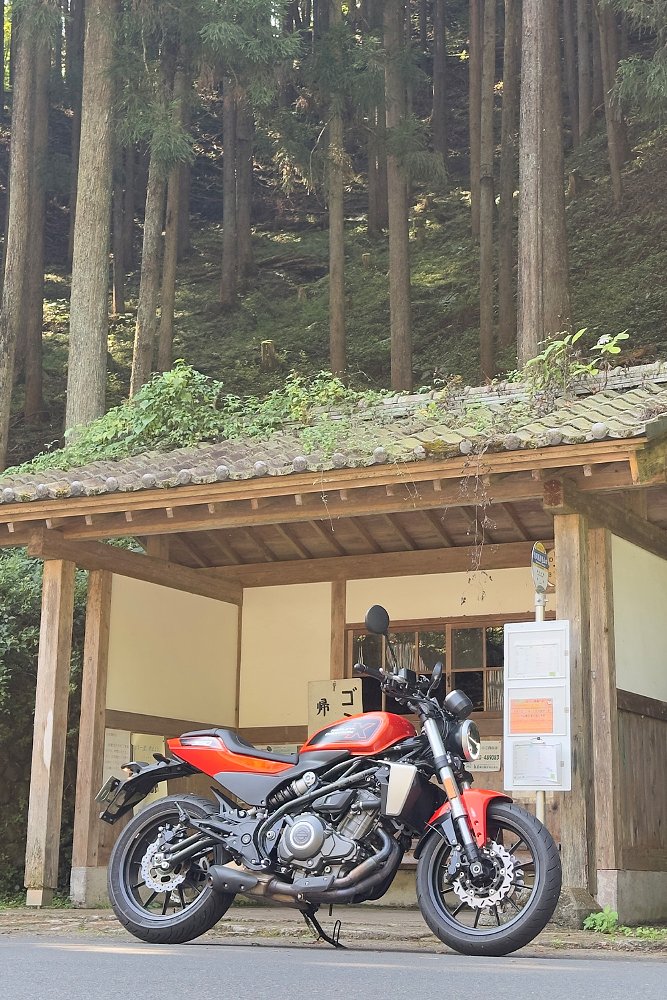
Tokyo Prefecture’s Route 206 runs along the Minamiaki River. Its canopy-covered roadways climb from the outskirts of Hinohara village up to the Mito Bridge. Between those two points, it’s nothing but twists and turns. The littlest Harley is right at home here.
I can’t characterize the X350 as quick, fast, or even brisk. Its slow-to-rev p-twin doesn’t warrant such adjectives. I can’t call its chassis particularly precise, either. Braking performance is dull (despite its dual-disc setup), the suspension is slightly undersprung, and its tires lack feedback. And yet, somehow, the wee roadster is a joy on a mountain road.
Keep up the corner speeds and the X350 flows through each bend, making up for its meager output with agility and fluidity. Chuck it into a hairpin or toss it side to side through the S-curves. It’s game. Let it be known, tagging apexes is optional. I missed one or two (or 10) during my day trip with Harley’s little wiggly piggly, but I never stopped grinning. All that without scraping hard parts once. Try to say as much aboard a “real” Harley.
A real chance?
The X350 doesn’t fit into the classic Harley mold. That’s not up for debate. What the model does do (or attempts to do, anyway) is appeal to a different crowd. The X350 is the alternative, but it’s the alternative in the way that a teriyaki burger is the alternative. Most folks prefer the genuine article. Either the cheeseburger or the gyūdon, not a dish passing itself off as both. That’s what the X350 feels like. Maybe that’s why it’s struggling to find an audience.
When returning the X350 to the local Rental819 (Odaiba), the service rep mentioned how clients rarely book the model. In his estimation, Japanese riders want a Harley that’s “made in America,” not China. Albeit anecdotal, the interaction identified what the X350 is up against. The Milwaukee marque has never indicated that the baby Hog would make its way to the States, but if it ever did, it would face similar obstacles.
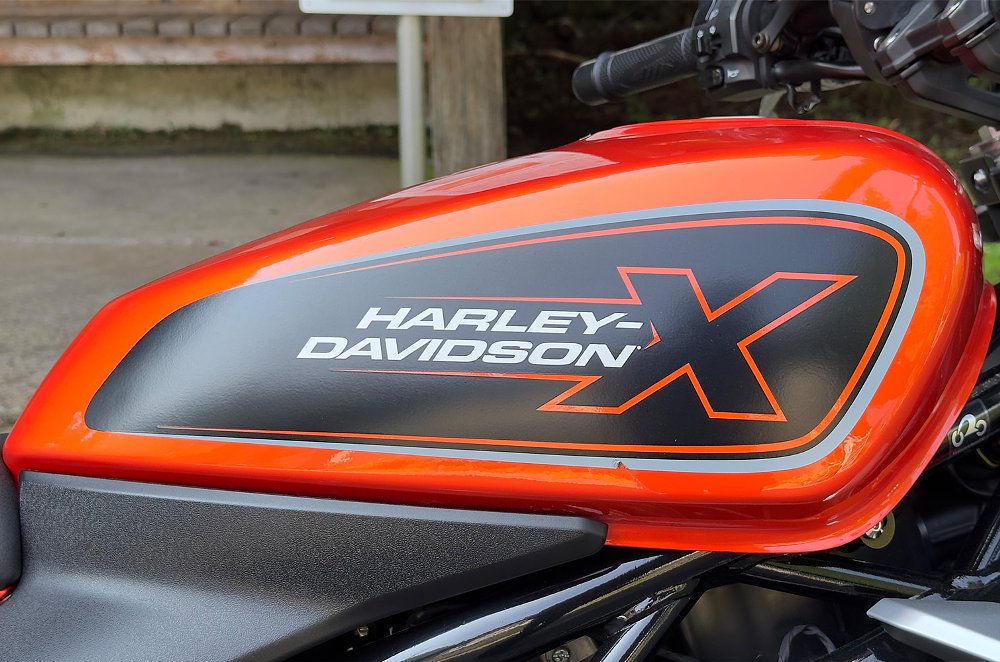
In Japan, the X350 starts at ¥699,800. Converted to Uncle Sam credits, that’s $4,755. An MSRP in that range would pit the model against the likes of KTM’s 390 Duke, Triumph’s Speed 400, Royal Enfield’s Guerrilla 450, and Aprilia’s Tuono 457. Stiff competition, if you ask me. That’s why it’s hard to imagine the naked Hog making the stateside journey any time soon. Even if that's the case, the X350 is a simple yet solid little motorcycle. For the right customer in the right market, it's worth a look. Whether or not it achieves “real” Harley status can’t change that much.
| 2024 Harley-Davidson X350 | |
|---|---|
| Price (MSRP) | ¥699,800 ($4,755 USD) |
| Engine | 353 cc, liquid-cooled, eight-valve, parallel twin |
|
Transmission, final drive |
Six-speed, chain |
| Claimed horsepower | 36 (at 8,500 rpm) |
| Claimed torque | 22.9 foot-pounds (at 7,000 rpm) |
| Frame | Tubular |
| Front suspension | 41 mm fork, adjustable for rebound damping |
| Rear suspension | Single shock absorber, adjustable for rebound damping and preload |
| Front brake | Dual four-piston calipers, 260 mm discs without ABS |
| Rear brake | Single-piston caliper, 240 mm disc with ABS |
| Rake, trail | 24.8 degrees, 100 mm (3.9 inches) |
| Wheelbase | 1,410 mm (55.5 inches) |
| Seat height | 777 mm (30.6 inches) |
| Fuel capacity | 13.5 liters (3.6 gallons) |
| Tires | Maxxis Supermaxx ST, 120/70ZR17 front, Michelin Pilot Road 4, 160/60ZR17 rear (as tested) |
| Claimed weight | 195 kg (430 pounds) |
| Available | Now, in some countries |
| Warranty | 24 months |
| More info | harley-davidson.jp |




